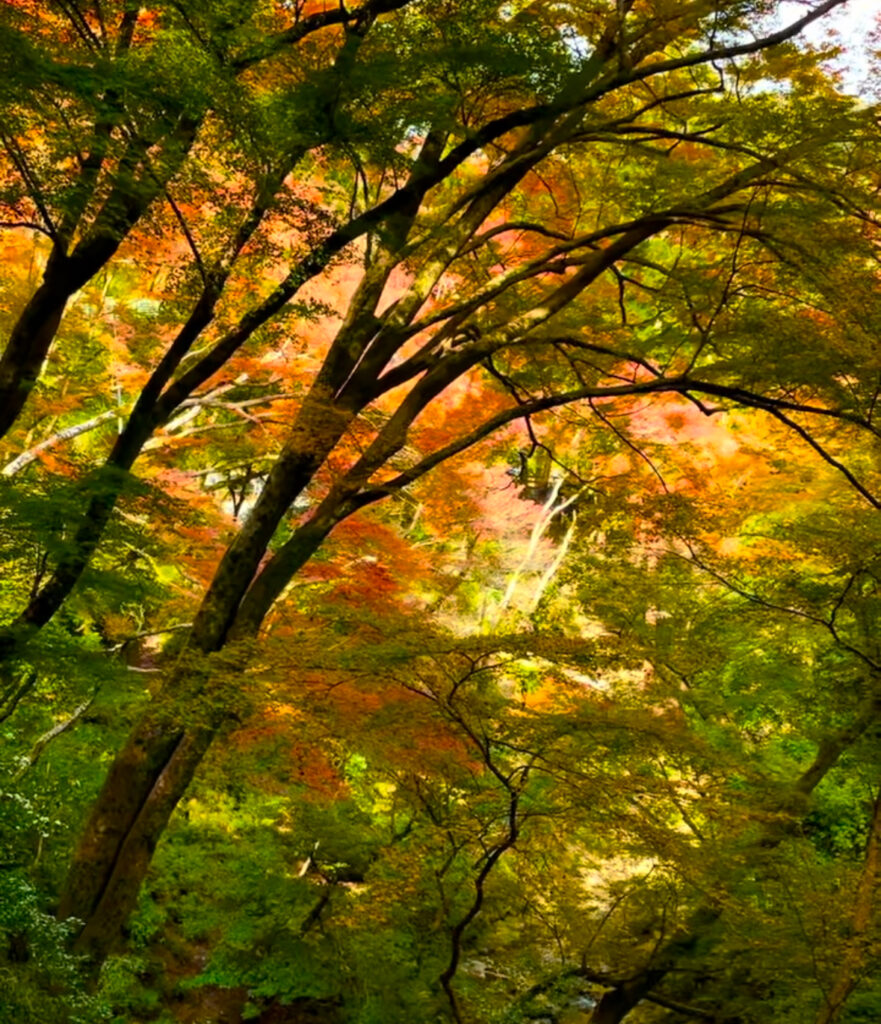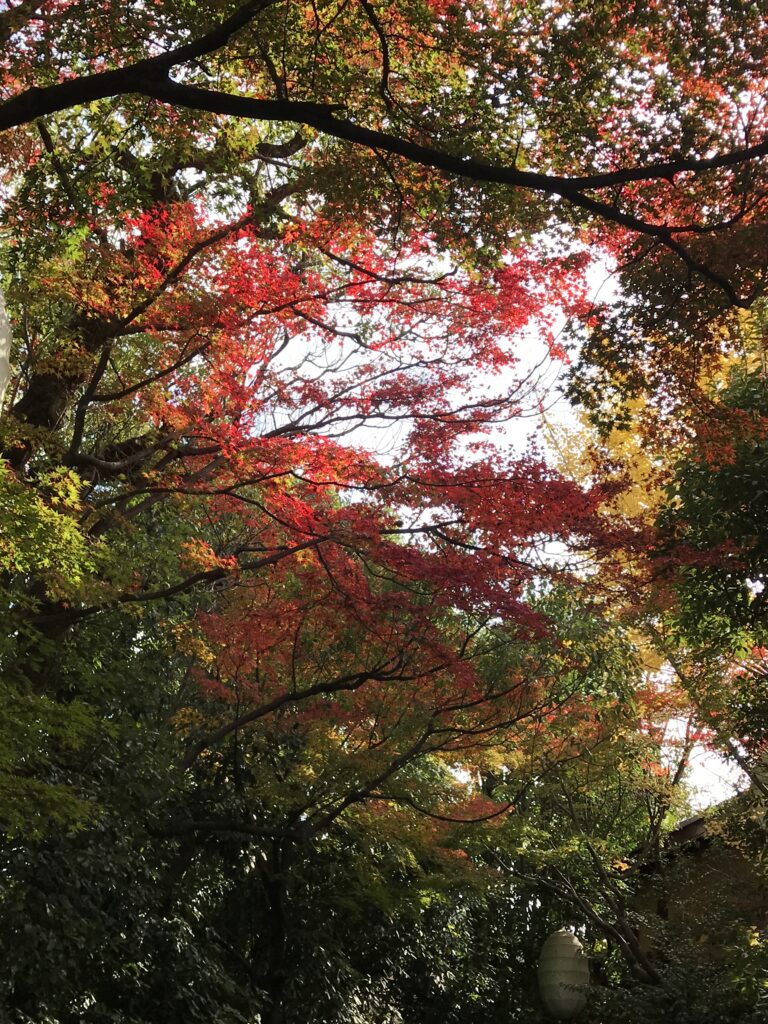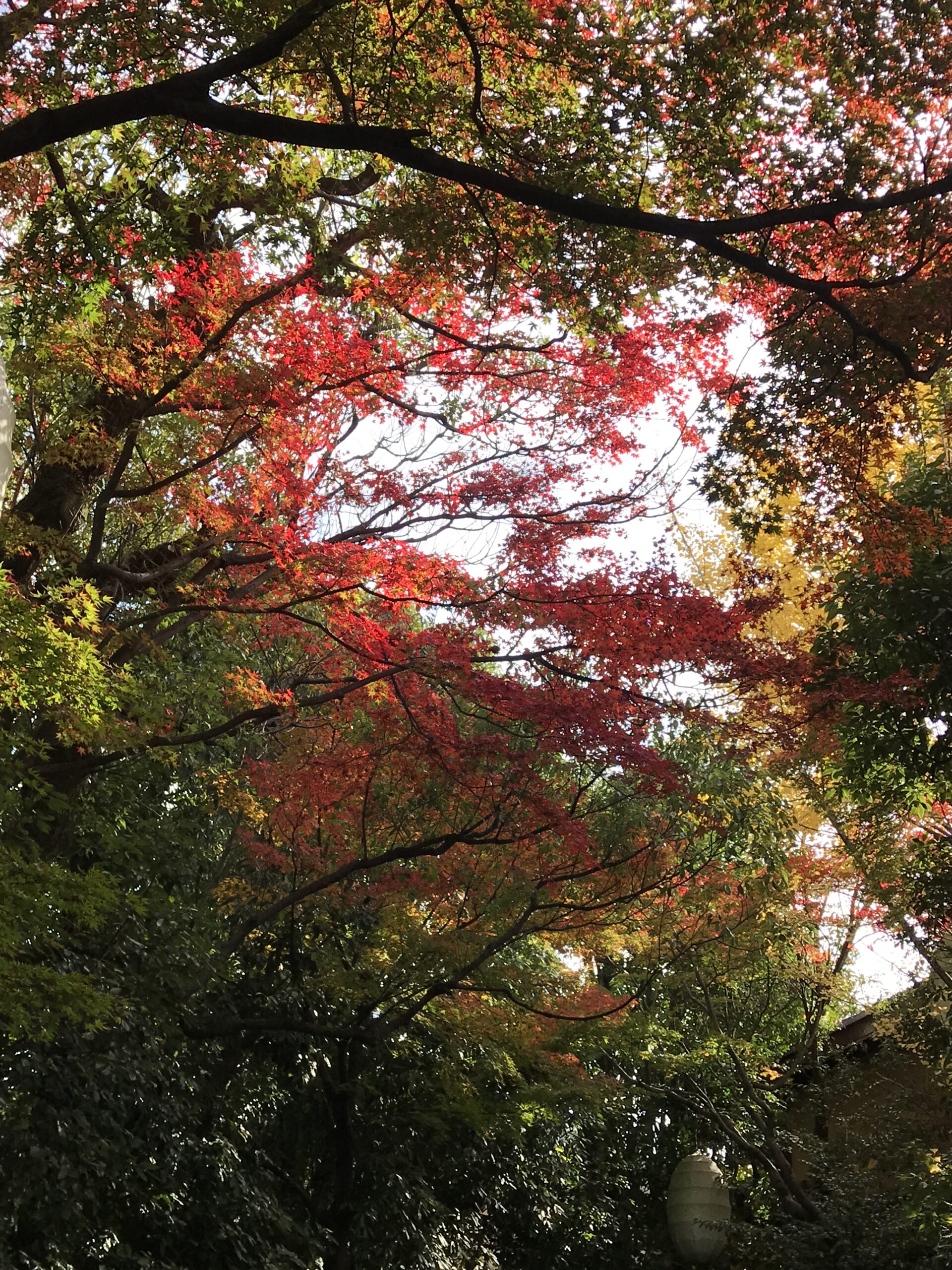
When people think of Japan, cherry blossoms in the spring may come to mind first. However, Japan’s autumn season, known for its stunning koyo (紅葉), or fall foliage, offers a breathtaking spectacle that rivals the beauty of springtime blooms. From late October to early December, the leaves of maple and ginkgo trees turn vibrant shades of red, orange, and yellow, transforming landscapes across the country into works of art. If you’re visiting Japan in the autumn, here’s everything you need to know about experiencing koyo at its finest.
1. What is Koyo?
Koyo (紅葉) refers to the natural phenomenon of autumn leaves changing color. The word specifically describes the leaves of deciduous trees, such as maples and ginkgo, turning red, yellow, or brown. In Japan, this transformation is highly anticipated each year, much like the cherry blossoms in spring. Locals and tourists alike venture out to admire the vibrant colors in parks, mountains, and temples, a practice known as momijigari (紅葉狩り), or “hunting for autumn leaves.”
2. The Best Time to See Koyo
The timing of koyo varies depending on where you are in Japan. In general, the colors begin changing in the northernmost regions first and gradually move southward. Here’s a rough guide to when and where you can catch the best views:
- Hokkaido: The northernmost island of Japan sees koyo as early as mid-October. Popular spots include Daisetsuzan National Park and Jozankei Onsen.
- Tohoku Region: In northern Honshu, places like Lake Towada and Mount Hakkoda are known for their stunning autumn foliage. Peak season is from late October to early November.
- Tokyo & Surrounding Areas: Tokyo’s parks, like Rikugien Garden and Shinjuku Gyoen, typically reach peak foliage in late November. Just outside the city, Nikko and Mount Takao are also popular destinations for autumn colors.
- Kyoto & Kansai Region: Kyoto’s temples, such as Kiyomizu-dera and Tofuku-ji, are world-famous for their beautiful koyo displays, which usually reach their peak in late November to early December. Nara and Osaka are also great places to enjoy the vibrant leaves.

4. The Cultural Significance of Koyo
Much like the cherry blossom season, the changing of the leaves in Japan holds deep cultural significance. Momijigari, or the tradition of enjoying autumn foliage, has been practiced for centuries, dating back to the Heian period (794-1185). During this time, the aristocracy would gather to admire the beauty of the leaves, composing poems and enjoying the serene atmosphere of nature.
Even today, the Japanese people treasure this season as a time of reflection and appreciation for the impermanence of nature. Many people visit temples and shrines, offering a chance to meditate or quietly enjoy the beauty of their surroundings as the colors of the leaves change with the passing days.
5. Top Koyo Spots in Osaka
While cities like Kyoto and Tokyo often steal the spotlight for autumn leaves, Osaka offers its own beautiful and accessible spots for enjoying the fall foliage. Here are some of the best places in Osaka to experience the stunning colors of autumn:
1. Minoh Park (箕面公園)
Located just outside the city center, Minoh Park is one of Osaka’s most famous spots for koyo viewing. A scenic 40-minute train ride from Umeda will bring you to this nature-rich park, where you can enjoy a peaceful walk along a river flanked by vibrant maple trees. The highlight of Minoh Park is the stunning Minoh Waterfall, which looks particularly breathtaking surrounded by the fiery reds and oranges of autumn leaves. Don’t forget to try the local specialty—maple leaf tempura—a unique snack made from deep-fried maple leaves!
2. Osaka Castle Park (大阪城公園)
Osaka Castle Park is a popular year-round destination, but it becomes even more magical in the fall when the ginkgo and maple trees turn bright yellow and red. The contrast of the colorful foliage against the iconic white walls of Osaka Castle makes for an unforgettable sight. Visitors can stroll through the park’s expansive grounds, which offer plenty of opportunities to capture the beauty of autumn leaves alongside one of Japan’s most famous landmarks.
3. Expo ’70 Commemorative Park (万博記念公園)
The Expo ’70 Commemorative Park in Suita, Osaka, is another must-visit destination for autumn foliage. Originally built for the 1970 World Expo, this vast park is home to a wide variety of trees, including maples, ginkgoes, and cherry trees, all of which display stunning fall colors. In addition to enjoying the beautiful scenery, visitors can explore various cultural and historical exhibits within the park. The Japanese Garden in particular is a serene spot to relax and take in the seasonal colors.
4. Daisen Park (大仙公園)
Located in Sakai, Daisen Park offers a tranquil escape from the hustle and bustle of the city. This park is known for its beautifully landscaped gardens, ponds, and walking paths, which come alive in the autumn with vivid shades of red and yellow. Daisen Park is also home to ancient kofun burial mounds, including Nintoku-ryo Kofun, one of the largest tombs in Japan. The combination of historical significance and natural beauty makes it a unique spot to enjoy the autumn season.
5. Hattori Ryokuchi Park (服部緑地公園)
For those looking to stay closer to the city, Hattori Ryokuchi Park in northern Osaka is a convenient and beautiful spot to enjoy the changing colors of the season. The park offers vast green spaces, ponds, and tree-lined paths, making it a popular spot for picnics and strolls. During the autumn months, the park’s maples and ginkgo trees provide a stunning display of colors, creating a peaceful and scenic atmosphere for visitors.
Ready to Explore Japan’s Autumn Splendor?
Whether you’re planning to travel north to Hokkaido or stay closer to Tokyo, Kyoto, or Osaka, Japan’s autumn foliage will offer a truly magical experience! Be sure to include koyo-viewing in your itinerary, and immerse yourself in the beauty of Japan’s fall season. 🙂

